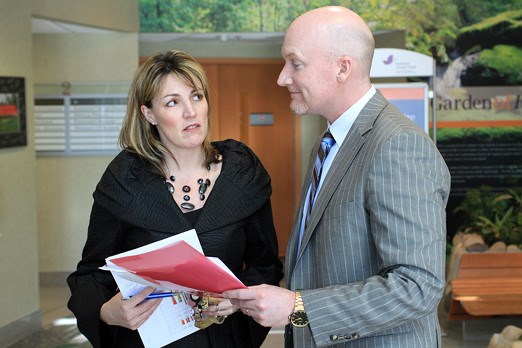Gridlock conditions at Thunder Bay Regional Health Sciences Centre mean longer waits for some patients in the hospital’s emergency department.
The good news is that patients who don’t require admission to the hospital are getting in and out ahead of the recommended timeframe set by the province.
“If the provincial target is four hours, which it is, we’re performing at 3.7 hours for those patients,” said Rhonda Crocker-Ellacott, vice-president of ER, critical care trauma surgery and chief nurse executive at the Health Sciences Centre.
“They’re seeing physicians and receiving treatment and being discharged from hospital more quickly than the provincial average. But for those patients who are higher acuity, with respect to their conditions, we see them waiting longer. Certainly one of the factors leading to the longer stay is our over-capacity situation at our hospital.”
The hospital’s overall emergency room wait time for complex conditions or those requiring admission from the last two months of 2010 is 12.1 hours, which is 50 per cent above the provincial target of eight hours for complex injuries, but just 36 minutes more than the provincial average.
Taken alone, patients requiring admission wait an average of 18 hours before treatment.
Crocker-Ellacott said only about a quarter of the patients hit the eight-hour mark, admittedly a “low number.”
There’s little the hospital can do by itself, she said, noting more than 300 patients a day and 100,000 a year pass through the hospital ER.
“Certainly it’s a health system issue that exacerbates itself in the emergency department. Because when we see situations of over-capacity and when we see our alternate level of care numbers sitting at over 50 patients, it obviously means that patients are waiting in acute care for other levels of care,” Crocker-Ellacott said.
“Therefore patients who are acutely ill with very complex conditions sit in the emergency department on stretchers waiting for beds elsewhere.”
Hospital chief of surgery Andrew Turner, until recently one of just two ear, nose and throat surgeons in Thunder Bay, said he’s not surprised pediatric surgeries in the department almost doubled the 182 day wait targeted by the province.
At 352 days, it’s more than 200 days above the provincial average – which states that nine out of 10 patients complete their procedures within the timeframe.
“It’s in fact been a source of some personal embarrassment,” Turner said. “Fortunately we’ve just recruited a third surgeon which should have an impact on our numbers.
“The other thing that’s helped is we’ve had an initiative whereby government has funded additional pediatric operative time in the past year. That’s allowed us to catch up a quite a bit on our backlog.
Turner said in dentistry alone they’ve likely doubled the number of patients they’ve seen, dropping the hospital below the provincial mark in that department.
There’s also good news in the cancer surgery and imaging wait times, said Michael Power, the vice president of regional cancer and diagnostic services at Thunder Bay Regional.
Provincial wait times call for no more than 33 days allotted to breast cancer surgery, with the local hospital hitting an average of 28 days. Prostate cancer wait times are targeted at 88 days, with TBRHSC coming in well under the number at 50 days, while MRIs take 124 days province-wide and just 69 days in Thunder Bay.
“We’ve had a very good run for the last three years actually, when it comes to chemotherapy and radiation waits. We’ve been best in the province for many quarters over the last three fiscal years. And we continue to be high performer in systemic therapy and radiation wait times, certainly working within our provincial targets,” Power said, adding their even hitting aggressive regional targets.
“Cancer surgery is one of the best in Ontario, probably a top-five performer out of the 54 hospitals. Somewhere in the neighbourhood of 90 per cent of our surgery cases are moving to the operating room within the recommended wait times.”
Sign in or register
- Messages
- Post a Listing
- Your Listings
- Your Profile
- Your Subscriptions
- Your Likes
- Your Business
- Support Local News
- Payment History
Registered Users
Already have an account?
New Users
Create a free account.
